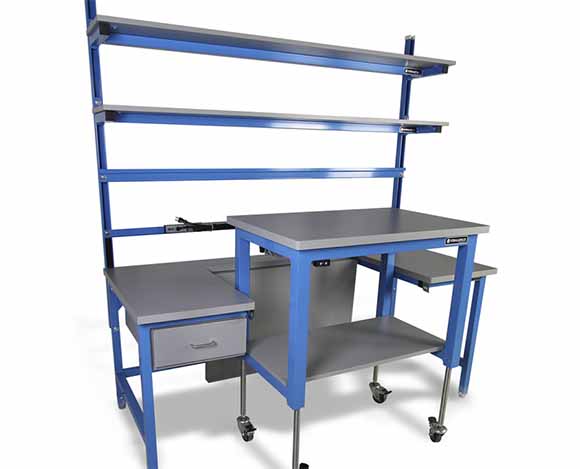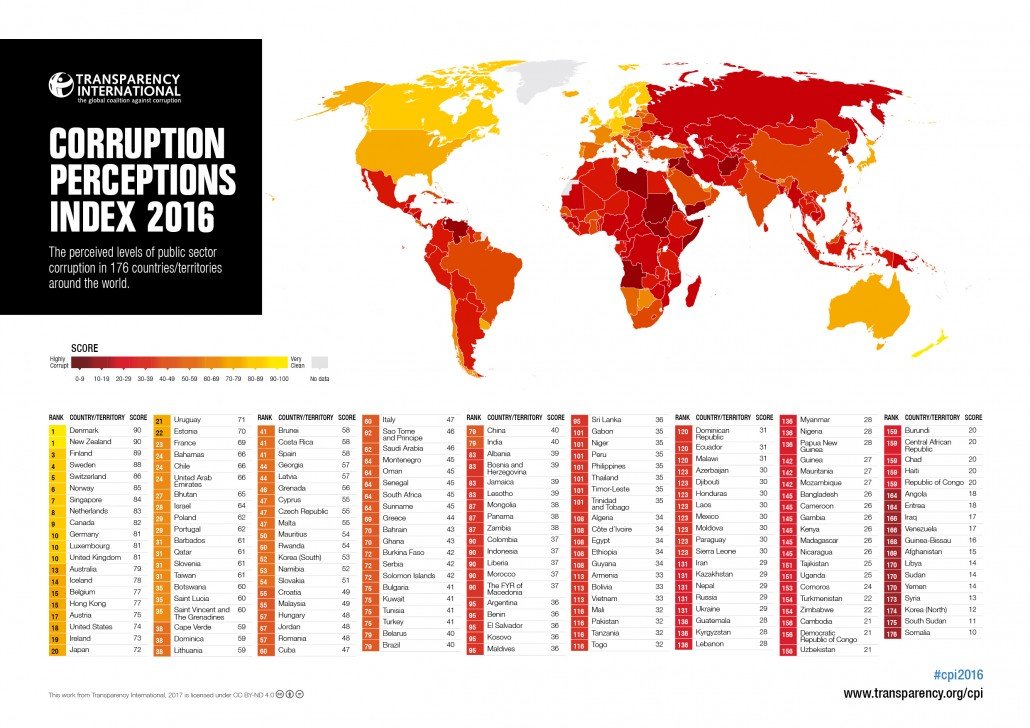Determining where to locate your next manufacturing plant can be a difficult decision, and it’s one that requires significant due diligence. We take a comprehensive look at the key factors — from the availability of skilled workers to effective corporate tax rates and quality of life issues — that can make your manufacturing relocation plan a success.

First, a quick disclaimer: as well all know, no two manufacturing operations are alike. For example, the needs of a specialized, R&D-driven medical devices company will be different from a price-sensitive, mass-market consumer goods operation. Likewise, an OEM electronics component supplier whose output delivery needs to be timed to the minute to satisfy a major automotive manufacturing plant will have different location requirements than a manufacturer processing raw materials sourced from a mining operation in Wyoming.
In other words, even though we’re presenting a comprehensive framework of manufacturing relocation factors, we hope it’s obvious that the importance of any one factor will be determined by the specific needs of your organization! Having said that, let’s take a look at hard costs first, followed by indirect, soft costs. Then we’ll look at some future trends to consider when weighing a manufacturing relocation decision, followed by a short list of some of the leading low-cost domestic and foreign locations. Finally, we’ll take stock of the pros and cons that could influence your own decision.
Manufacturing Relocation: Direct Hard Cost Factors to Consider
In this section, we’ll look at five relocation factors that can have a direct, measurable impact on the bottom line.
1. Supply Chain Infrastructure / Logistics and Access to Customer Markets
Does the candidate location bring you closer to your customer markets? Moving your manufacturing plant closer to your customers can help you increase profits or build up market share by speeding up delivery times, reducing inventory, and cutting costs.
Can you build an efficient, end-to-end supply chain in the candidate city, or will delivery of some components or raw materials be compromised by long distances or unreliable connections? Will weather conditions create unacceptable delays during part of the year?
We recommend performing a complete review of the region’s infrastructure, e.g. deepwater ports, freight rail access, trucking and highway connections, international airports, expediting and transshipment services, as well as Internet, communication, power and water utilities to determine if they are reliable and efficient enough to meet your specific needs.
2. Effective Corporate Tax Rates and Incentives
For each candidate location, it’s crucial to calculate the total impact of local, state, and national taxes, including property-based taxes. Quite a few jurisdictions offer tax breaks and rebates to companies in exchange for activities that benefit their community, such as renovating existing facilities or remediating brown-field sites, investing in targeted industries that create new jobs or conducting research and development activities.
(If your customer includes the Federal Government, don’t overlook preferential contract treatment set-asides — through the HUBZone program, for example — for companies headquartered in historically low-income census tracts.)
It’s also becoming more common for major companies, such as Boeing or Amazon, to conduct highly-publicized campaigns when choosing the location of a new facility. Many cities, regions, and states are willing to negotiate multi-year tax incentives or abatements in exchange for creating new jobs or locating facilities in their jurisdictions. Incentives may be available at the country level as well; for example, France has become notably more aggressive in courting tech-oriented companies.
3. Tax Domiciles, Exchange Rates and Economic Conditions
While smaller manufacturing companies are likely to keep things simple by limiting themselves to domestic operations, large corporations, such as Apple and Nike, have recently been thrust into the news as details of their highly complex tax domicile and ownership structures have been leaked to the press.
That’s quite a bit beyond our remit to provide that level of corporate advice*, as we’d rather stick to much more transparent considerations, such as exchange rates and general economic conditions. With respect to exchange rates, quite a few multi-national companies find it advantageous to hedge against dramatic shifts in exchange rates by having multiple manufacturing bases around the world. When one currency goes up, production can shift to a location with a more favorable exchange rate. And countries with long-term economic growth (and rising consumer incomes) obviously make better candidates for locating consumer goods manufacturing plants — unless your goal is to export 100% of the goods from countries with very low, depressed wages.
*We do note that proposed changes to the US Corporate tax code now before Congress (as of late November 2017) are worth careful monitoring as potential changes to the tax code may encourage US companies to repatriate their foreign-earned profits back to the USA.
4. Business Regulatory Regimes and Customs/Trade Agreements
Substantial trade agreements (such as NAFTA in North America), customs unions (such as the European Union), and special economic zones (such as China’s Shenzhen, the city immediately north of Hong Kong) have helped create regional manufacturing zones, where goods in process (as well as completed goods) can travel across country borders with minimal delays or customs duties. Harmonizing regulations across borders has also reduced non-tariff-based trade barriers. This combination has led to the development of highly-sophisticated manufactured goods supply chains; for example, oftentimes the individual components of automobiles produced North America make multiple trips across the Mexican, US, and Canadian borders before final assembly.
There are also new agreements are on the horizon that may impact manufacturing relocation decisions as well, such as the revived negotiations for a pan-Pacific trade agreement (once known as the Trans-Pacific Partnership) that will stretch from Canada to Chile, to New Zealand and Australia, to Japan and, potentially, Korea. (The US has opted out, and China has yet to be invited.)
On the one hand, so important are the ramifications of major trade agreements and customs unions, such as NAFTA and the EU, that they can be considered in some cases to be the sole determining factor when deciding where to locate a new manufacturing plant. On the other hand, these agreements can be politically controversial: witness the UK’s vote to leave the EU over issues such as free movement of people — despite repeated warnings from companies, such as Honda and Airbus, that a ‘hard’ Brexit would put their UK manufacturing operations at risk. Similarly, many American workers have come to resent NAFTA, for whom the agreement represents nothing more than jobs shifting to Mexico. However, changes to the NAFTA agreement recently proposed by the US trade representatives may prove just as disruptive to workers in the Detroit automobile industry as it will to mid-west farmers who depend upon grain sales to Mexico.
North American automotive manufacturing experts discuss ways that changes proposed by the US Administration to NAFTA’s rules-of-origin content regulation will affect North American manufacturing competitiveness.
The bottom line: when choosing a manufacturing location, have your eyes wide open to potential treaty and regulatory regime changes that may be on the horizon. Carefully investigate business regulations, permitting times (maddeningly long in Brazil and Greece), environmental regulations, and labor rules that would apply in your proposed new location. For example, European Union rules governing environmental pollution (such as the elimination of lead in manufacturing processes) and greenhouse gas reduction can be surprisingly strict, as can requirements for compensation and notice due to workers facing potential layoffs.
5. Business Operating Costs
Performing due diligence on direct business operating costs is next. You’ll want to collect data on these areas:
Facility / Real Estate Costs
What is the market for purchasing or leasing real estate? Will it be more advantageous to build or rent a new facility or renovate an existing one? Can you get an option for potential expansion? What are the tax implications (mentioned above) for owned property, including tools and inventory?
Utility Costs
Is the country self-sufficient in energy or could its supplies be disrupted by an energy boycott or cutoff? Are the utility costs favorable and services reliable? Will you need to budget for more than just emergency backup generators? Industries with high energy demands, such as data centers or aluminum alloy manufacturers, tend to gravitate to locations with low-cost energy resources, such as hydroelectric power.
Labor Unions and Wage Costs
What is the availability of skilled workers required for your manufacturing plant? What are the current local wage rates and minimum wage standards? Are there local training centers that graduate workers with the skills you need, or will you need to invest in training programs or pay to relocate staff? Are most manufacturing plants unionized in this location? Does the location have open or closed shop union regulations? How would you characterize the labor union’s relationship with local industry?
Employee Benefits such as Healthcare, Pensions, Unemployment, Insurance
What are the customary employee benefits in this location?
For example, will defined-benefit retirement plans (e.g. traditional pensions) or defined-contribution retirement plans (e.g. 401K) planned-benefit pensions be required as part of the compensation package?
What about employer-provided healthcare plans? Keep in mind that outside the USA most healthcare plans do not require employer contributions, these are provided either by direct insurance plans paid directly by individuals or funded by the government directly.
Is the employer responsible for paying unemployment, occupational accident or life insurance policy premiums in the proposed location? While these are benefits typically offered by American companies, this can vary worldwide.
Manufacturing Relocation: Indirect and Soft Cost Factors to Consider
Now let’s take stock of some of the indirect factors that you should consider when undertaking a manufacturing plant location analysis.
1. Network Effect / Industry Clusters / Talent and Knowledge Base
Historically, many industries tend to cluster in certain geographic areas. Examples of this include the auto and truck industry in Detroit, computers and software in Silicon Valley, pharmaceuticals in New Jersey, entertainment and media in Los Angeles, and finance in New York City or London. If there is such a cluster of industry in your sector, you should weigh potential pros and cons of the “network effect” that comes from being located near your competitors. When a region is known for a particular industry segment, it can attract talent and support institutional “know-how” that takes many beneficial forms, from informal industry contacts to educational programs in area schools and universities. It could also lead to job poaching or worse, such as compromising industrial secrets, which may lead you to decide to avoid being located anywhere near a competitor!
2. Business Transparency and Criminal Activity
As Americans, we tend to think of successful business transactions in terms of offering the best deal, the best product, the best service. As such, the idea that you have to pay a bribe to a potential customer or an official to secure a deal, or obtain a license or agreement doesn’t happen that often (not the least of which because it’s illegal this country). However, this level of business transaction transparency is not universal around the world. Paying money to customers, government officials, and organized crime figures can be commonplace in some parts of the world, which in turn, can pose problems for Americans who want to avoid these practices and also avoid violating American law. The stakes can be even higher. Criminal activities can be life-threatening in countries such as Mexico, Honduras, or El Salvador, where kidnapping company officials (or their spouses or children) for exorbitant ransoms are not unheard of. In these regions, hiring bodyguard protection and the use of secure, armored vehicles are considered a good investment.
3. Cost of Living for Employees
Can your employees afford to live well in the proposed location or will high or rising costs drive up wage costs? Take a look at housing affordability, the effective income tax rates (for national, state, and city taxes, if applicable) as well a property taxes.
Is there a way for employees to get to work efficiently, such as via a cost-effective public transportation system? Will they spend hours commuting to work — either because the road/transit system is poor and overcrowded or the commute distance between the manufacturing plant and affordable housing is too far?
4. Quality of Life Consideration
Health and Safety
What’s the homicide rate? How many deaths occur on the highway due to accidents? Are there drug and crime epidemics in the region? Do the area’s hospitals and doctors provide sufficient preventative and emergency care?
Educational Institutions
Are the public schools high quality, or will it be necessary for employees to educate their children privately, for example, at expensive, English-language international schools?
Are there institutions of higher learning that can attract candidates and provide a source of skilled, creative employees?
Cultural Institutions, Language, Religious Worship
Does the city offer museums, symphonies, theater and other enriching cultural institutions? Will company executives and family members need to learn a foreign language? Does the city or state allow for freedom of assembly and religious worship?
Diversity and Inclusion
Are the city and its workforce culturally and racially diverse? If located abroad, are there equal opportunities for women, or will female managers or expat family members find themselves excluded from many aspects of daily work and home life? Will LGBT employees and expat family members be accepted or discriminated against?
Recreation and Leisure
Are there amateur or professional sports teams in the city or region?
Are there plenty of outdoor and leisure activities to promote good health and mental well-being?
Can you Future Proof Your Manufacturing Plant Decisions?
It’s hard to predict the future, but it’s a useful exercise to think about potentially disruptive changes that could have an effect on your choice of a manufacturing location. It’s easy to get blindsided by unexpected developments… after all, even Michael Bloomberg, founder of the eponymous Bloomberg financial intelligence and media company, was caught out by the unexpected plans for the UK to exit the European Union just as he opened up Bloomberg’s spanking new European headquarters — in London!
Some of the items on this future possible developments checklist to consider include:
- Continued impact of smart, manufacturing automation and robots.
- Jobs that will be replaced by automation.
- The increasing importance of sustainability and the impact of renewable energy on manufacturing.
Top Lowest Cost USA Manufacturing Plant Locations
So, what do you think are the best locations in the US for siting your next manufacturing plant? For many, it’s not the west coast — detractors point to overcrowding and high costs, especially in real estate and salaries. (In fact, some investors are taking a second look at the mid-west as a place to invest in new tech startups.) Yet, Elon Musk has made a successful go at it, building Tesla cars in the expensive Bay Area and rocket ships along the coast east of Los Angeles.
As we said at the beginning of this article, the answer to which is the right manufacturing location for you is dependent on your industry sector and your particular mix of requirements. So we’ve turned to KPMG, who has handily enough undertaken a sector-by-sector analysis of different cities, here in the USA and abroad, and ranked them.
On a cost basis only, KPMG found these were the lowest-cost cities for operating manufacturing facilities in the US in 2016:
- Shreveport, LA
- Montgomery, AL
- Savannah, GA
- Baton Rouge, LA
- Nashville, TN
- New Orleans, LA
- Lexington, KY
- Gulfport-Biloxi, MS
- Mobile, AL
Indeed, some famous names in manufacturing have moved to these cities, including Airbus (Mobile, AL), Gulfstream (Savannah, GA), Hyundai (Montgomery, AL), Lockheed Martin Corp/NASA (New Orleans, LA), Nissan (Nashville, TN), and Northrup-Grumman ( New Orleans, LA).
States with Lower Tax Rates
These states have no personal income tax:
- Alaska
- Florida
- Nevada
- South Dakota
- Texas
- Washington
- Wyoming
However, income tax rates are not the complete picture: sales tax, property tax, and other local taxes can affect the effective tax rate. Kiplingers publishes a comprehensive ranking of each state, which is worth evaluating to see how your candidate location ranks among the other states.
What about taxes on manufacturing facilities? According to the Tax Foundation, these states have the lowest tax rates for labor-intensive manufacturing facilities:
- Wyoming (4.3%)
- Virginia (4.3%)
- Georgia (4.6%)
- Maryland (4.9%)
- Nebraska (5.5%)
- Missouri (5.8%)
- Arizona (6%)
- South Dakota (6.0%)
- Louisiana (6.9%)
- Michigan (6.3%)
States with Low Cost of Living
In addition to taxes, there are many other factors which keep the cost of living lower in certain states. For example, states with moderate weather have reduced the need for winter heating or summer cooling. Housing, local utility rates, the cost of food, healthcare, insurance, and transportation can drive up the cost of living in a particular location.
CNBC recently published a report that ranked each state according to its cost of living. The ten cheapest states were:
- Mississippi
- Indiana
- Michigan
- Arkansas
- Oklahoma
- Idaho
- Tennessee
- Kansas
- Texas
- Kentucky
Open Shop States
For some, the site location selection will be influenced by laws governing labor unions. These states have “open shop” laws (also known as “Right-to-Work” laws) which make joining a labor union optional for individual employees. In 2017, over half of the states have open shop laws:
- Alabama
- Arizona
- Arkansas
- Florida
- Georgia
- Idaho
- Indiana
- Iowa
- Kansas
- Kentucky
- Louisiana
- Michigan
- Mississippi
- Missouri
- Nebraska
- Nevada
- North Carolina
- North Dakota
- Oklahoma
- South Carolina
- South Dakota
- Tennessee
- Texas
- Utah
- Virginia
- West Virginia
- Wisconsin
- Wyoming
Top Low-Cost Global Manufacturing Plant Locations
What about international locations?
During 2016, KPMG found that, among ten major western economies, the strong US dollar made America the most expensive among these ten countries. Mexico came out on top, as the most cost-effective in KPMG’s ranking. Here is the list, from least to most expensive.

- Mexico
- Canada
- Netherlands
- Italy
- Australia
- France
- UK
- Germany
- Japan
- US
However, the KPMG study didn’t investigate cities and countries that are increasingly making themselves known for inexpensive manufacturing, such as Poland, Romania, and Bulgaria in eastern Europe and Malaysia, India, Thailand, Indonesia, and Vietnam in Asia.
The consulting firm Deloitte performed a worldwide analysis that ranked countries according to their manufacturing competitiveness. While KPMG ranked the USA as the highest cost manufacturing location, Deoitte’s ranks the US as the most competitive overall. By the year 2020, Deloitte anticipates that the top 20 most competitive manufacturing companies will be ranked like this, with the US still the most competitive:
- United States
- China
- Germany
- Japan
- India
- South Korea
- Mexico
- United Kingdom
- Taiwan
- Canada
- Singapore
- Vietnam
- Malaysia
- Thailand
- Indonesia
- Poland
- Turkey
- Sweden
- Switzerland
- Czech Republic
Deloitte’s 2020 forecasts indicate that India and Vietnam will each move up six slots (compared to 2016), and Malaysia and Indonesia will each move up four slots. Along with Thailand, these countries, dubbed the “MITI V” group by Deloitte, are poised to be more competitive than China in the manufacture of labor-intensive products, such as commodity textiles, toys, and basic consumer goods.
The cost of corruption, especially bribery and extortion, is another important consideration for your manufacturing facility site selection criteria. This map from Transparency International shows the relative rankings of countries in 2016. Denmark and New Zealand are tied for the least corrupt countries. The United States has slipped to #18.
Weighing the Pros and Cons: Why Formaspace is in Austin, Texas
Decisions get made for a variety of reasons.
As for Formaspace, we looked at the pros and cons and found that for us, locating our factory headquarters in Austin, Texas was the right location:
- We are fortunate that our region in Texas has steel manufacturers so that we can get high-quality steel locally.
- Being located in the center of the country speeds up shipping times and reduces costs for our customers.
- Austin is well-known for the University of Texas, as well as many cultural activities and festivals, including the Austin City Limits music festival and SXSW Conference for the film, interactive, and music industries.
- We enjoy good weather (despite complaining about the heat in July and August), and there are plenty of outdoor recreational activities, including cycling, hiking, and water sports.
- On the other hand, the city has grown very fast (too many of you have come!), and now it’s difficult to get around during many times of the day; new roads and public transportation projects have been slow to close the gap.
- Austin is no longer inexpensive either; housing prices have increased dramatically in recent years, making it harder to live close to the city.
Nonetheless, we’re proud to be here and wouldn’t have it any other way!
Formaspace Can Help Make Your Manufacturing Relocation a Success
When you are ready to build, renovate, or expand your manufacturing operations, you should involve Formaspace early in the process.
Our Formaspace Design Consults can work with your architect and space planners to lend our extensive advice on how to make your manufacturing facility as efficient and productive as possible — from the executive office to the production floor to the warehouse. The process starts with a Formaspace Rapid Plant Assessment: our manufacturing experts review your plans and make recommendations on ways to improve efficiency, from implementing lean manufacturing methods to proposing technical furniture solutions, such as custom manufacturing workbenches, to make your manufacturing plant more productive than ever.

Find out why Fortune 500 companies like Dell, General Electric, and Lockheed Martin turn to Formaspace to help them create productive spaces that can have a major positive impact on their bottom line.
Learn more. Contact your friendly Formaspace Design Consultant today. Just fill out your information in the quick contact form below, and get the conversation started.











